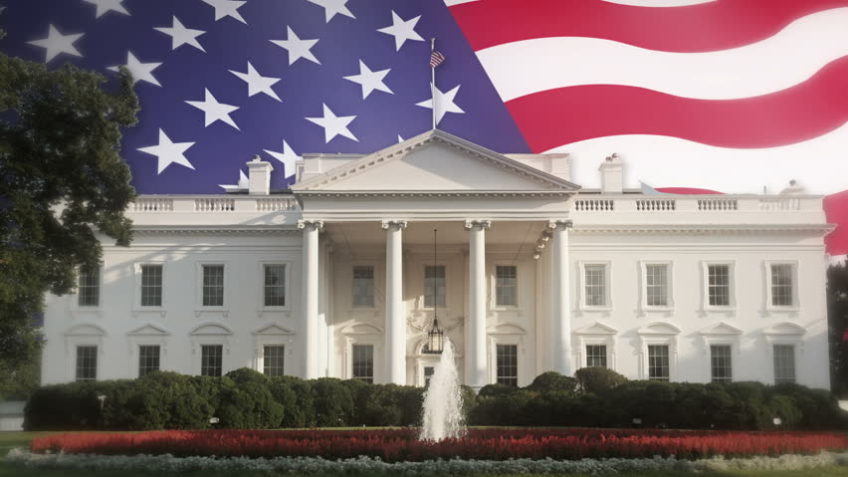
Understanding the NEW Coronavirus Laws
Breaking Everything Down for you
Families First Coronavirus Response Act Just Passed by the Senate & Signed Into Law by the President
Today, in an effort to ward off economic calamity, the U.S. Senate passed its second economic relief bill this month in response to the coronavirus pandemic—the Families First Coronavirus Response Act (“Act”). The Act, which passed by an overwhelming 90-8 vote and was then quickly signed into law by President Trump, expands emergency paid sick and family leave for certain workers, expands unemployment insurance assistance, includes nutrition assistance, and guarantees free diagnostic testing for the coronavirus. Note that our analysis is based on the bill’s language as of March 18.
GOING FURTHER.
Q. What workers are covered by the paid sick and family medical leave provisions of the Act?
A. All workers are covered by the Act, though there are specific carve-outs for certain health care workers and first responders.
Q. What provisions are made regarding paid family leave?
A. Division C of the Act is the Emergency Family and Medical Leave Expansion Act, which amends the Family and Medical Leave Act of 1993 (“FMLA”) and creates a new federal emergency paid leave benefits program. It defines a “qualifying need related to a public health emergency” as a day an employee is unable to work or telework due to a “need for leave to care for the son or daughter under 18 years of age of such employee if [his or her] school or place of care has been closed, or the childcare provider of such son or daughter is unavailable, due to a public health emergency.” [Emphasis added.] A public health emergency means “an emergency with respect to COVID-19 declared by a federal, state, or local authority.”
Q. When does paid family leave kick in under the Act?
A. The Act requires an employer to provide paid family medical leave for each day of leave that an employee takes after 10 days of unpaid leave.
Q. Are there limits to the amount of paid family leave?
A. Yes, paid family leave is limited to $200 per day and $10,000 in the aggregate.
Q. What employers are affected by the paid family leave?
A. The Act applies to all companies with fewer than 500 employees. However, certain health care providers and emergency responders may be excluded from the definition of eligible employee, and businesses with less than 50 employees may be exempt from the Act’s paid leave requirements “when the imposition of such requirements would jeopardize the viability of the business as a going concern.”
Q. Who is eligible for emergency leave day protection?
A. The Act applies to employees who have been employed for 30 days by the employer from whom leave is sought.
Q. Who is eligible for paid sick leave under the Act?
A. Division E of the Act, the Emergency Paid Sick Leave Act, requires employers to provide paid sick time to any employee unable to work or telework due to:
• A federal, state, or local quarantine or isolation order relative to COVID-19 that the employee is bound by;
• Advice by a health care provider that the employee self-quarantine due to COVID-19 concerns;
• Symptoms of COVID-19 being experienced by the employee, leading the employee to seek a medical diagnosis;
• The employee’s need to care for an individual subject to a quarantine order or who has been advised to self-quarantine;
• The employee’s need to care for a son or daughter if the school or place of care of the son or daughter has been closed, or the childcare provider is unavailable, due to COVID-19 precautions.
It is important to note that the portion of the Act pertaining to employees subject to “local quarantine or isolation order” could have a profound effect on businesses, especially in areas where “shelter in place” or similar orders are currently in effect or will go into effect in the future.
Q. How much paid sick time is an employee entitled to?
A. Full-time employees are entitled to 80 hours of paid sick leave. Part-time employees may receive sick leave pay for the number of hours equal to the average number of hours worked over a two-week period.
Q. How long must an employee be employed to be eligible for emergency paid sick time?
A. Paid sick time is available for immediate use regardless of how long the employee has been employed.
Q. What if an employer fails to pay sick or family leave under the Act?
A. An employer who fails to pay sick or family leave under the Act shall be deemed to have violated payment of minimum wages under the FLSA. This could result in fines and penalties.
Q. How can an employer offset the added cost of sick leave?
A. The employer is allowed a payroll tax credit for 100% of qualified sick or family medical leave wages paid. The Act does not address the precise timing and mechanics for claiming the tax credit, though the Secretary of the Treasury is granted broad authority to prescribe such regulations or other guidance as may be necessary to carry out the purposes of the Act.
Q. What are the expanded unemployment benefits under the Act?
A. Division D of the Act—the “Emergency Unemployment Insurance Stabilization and Access Act of 2020”—grants $1 billion in emergency aid to states to provide additional unemployment insurance benefits.
In order to access these grants, states must (a) require employers to notify terminated employees that unemployment compensation is available; (b) ensure that employees can apply for benefits through at least two of the following means: in person, via telephone and online; and (c) notify applicants when an application is received and being processed, and if the application cannot be processed, provide information to the applicant to ensure that processing can be completed.
Additional grants may be available for states in which unemployment claims increase by at least 10%. These additional grants are conditioned on any given state establishing the measures it has taken to ease eligibility requirements and access to unemployment insurance, including waiving work search requirements and waiting periods for claimants directly impacted by COVID-19.
Q. Does the Act address coronavirus testing?
A. Yes. The Act guarantees free diagnostic testing for the coronavirus.
Q. The Act also relates to nutritional assistance. What does that mean and who is eligible?
A. If a child receives assistance under the Richard B. Russel National School Lunch Act, and if that child would have received free or reduced price school meals under that act had his or her school not closed due to the coronavirus, the parent or guardian may be eligible to take advantage of the waiver under the COVID—19 Child Nutrition Response Act. It should be noted the Secretary of Health and Human Services must declare a public health emergency as a result of Covid-19 to trigger nutritional assistance, which emergency designation is to be tied to the length of school closures. However, the Act creates a nationwide waiver authority, allowing school officials to distribute food in any number of settings across all nutrition programs and to be flexible on meal components if food supply or procurement is disrupted.
Q. How do people receive nutritional assistance afforded by the Act?
A. Schools can make meals available to families through waivers granted under the Act, and they can be distributed at either selected schools (as is being done in San Francisco) or in additional locations as designated by state authorities. Some states are still debating how to enact these measures, so those interested parties should consult with local authorities. In any event, it is important to make employees aware that they may be eligible for these benefits.
Q. Should we expect any future stimulus packages to result from the coronavirus pandemic?
A. Yes. A third (and potentially the largest) economic relief and stimulus bill—rumored to include direct payments to individuals as well as stimulus to prop up struggling businesses—is expected as early as next week.
As always, should you have any questions about the Families First Coronavirus Response Act, do not hesitate to contact us at your earliest convenience.
